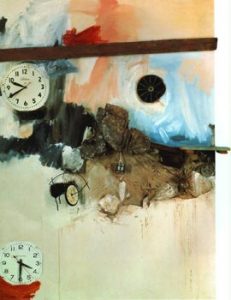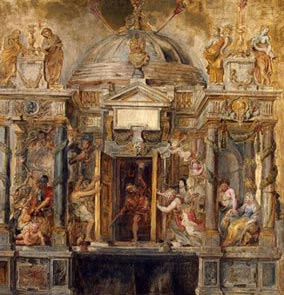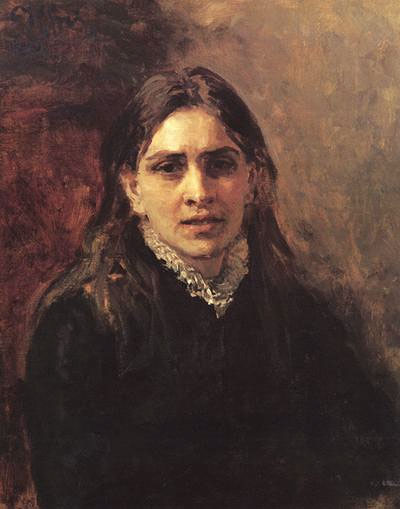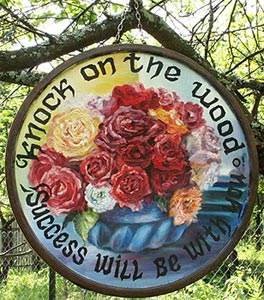Pop Art
 Pop art (English pop-art, from popular art to public art) is a trend that took shape first in modern art and then in various spheres of popular culture of the 20th century.
Pop art (English pop-art, from popular art to public art) is a trend that took shape first in modern art and then in various spheres of popular culture of the 20th century.
Pop art originated in the 50s of the 20th century in the USA and Great Britain and finally won a “place under the sun” at the international exhibition in Venice (1964), defeating abstractionism. An American artist R. Rauschenberg received the main prize for “subject compilation” composed of combinations of colorful postcards and a scrap of a poster, clippings from illustrated magazines and a photograph of the assassinated President J. Kennedy.
Representatives of pop art in the person of R. Rauschenberg offered the viewer the art, operating with the usual objects, which, being pulled out of ordinary connections with the surrounding objects, appeared in random, paradoxical combinations.
“New objectivity”, which Cubism asserted at the beginning of the 20th century, returned in subject compilations of pop art. Turning to the world of things created by mass industrial production, pop art quickly entered the sphere of modern mass culture and merged with advertising, design, decorative art. English pop art, short for popular art, is a popular, generally accessible art, the term is also explained by the meaning of the echo-obstructive English “pop” – a jerky beat, a pop, a slap, that is, as an art that produces a shocking effect.
Pop art arose as a kind of reaction to the dominance of abstract art with its complete separation from reality and as a continuation of extravagant experiences of Dadaism and surrealism of the 20s in the conditions of the total industrial civilization.
It was spread primarily in the art of the United States (R. Rauschenberg, K. Aldenberg, R. Lichtenstein, J. Rosenquist, J. Dayne, E. Warhol), and then Great Britain (P. Blake, R. Hamilton), France (A. Fernandez; N. de Saint-Fal), Germany (P. Wunderlich) and other countries. Representatives of Pop Art have proclaimed their goals “a return to reality”, the disclosure of the aesthetic value of samples of mass production. They literally reproduce typical objects of modern urbanized life (household items, packaging of goods, machine parts, etc.), widely use the usual language of the media (stamped methods of advertising, press, television, cinema, documentary photography, comics, etc. .). However, despite the diversity of imaginative associations that Pop Art arises from the viewer, their apparent topicality, they are alienated from the true reality: bright visual effects (achieved with the help of modern artificial materials and complex technical techniques) drown out the notes of irony in them, the rejection of the dominant in a society of “consumption for the sake of consumption”.
After the Second World War in America, a large social stratum was formed of people who earned enough money to buy goods that were not particularly important to them. For example, the use of goods: Coca cola or Levi’s jeans become an important attribute of this society. A person, using one or another product, shows his belonging to a certain social stratum. Current formed mass culture. Things became symbols, stereotypes. Pop art necessarily uses stereotypes and symbols.
Many of the creators of pop art use creative methods that came from the Dadaist experiments (society “Dada”), when the form is not modeled from the material, but composed of artificial objects. So assemblage has become a springboard for multifaceted thinking, which is becoming more and more important for the artist – for environmental art and hepenning. It also leads to new forms of the realization of creativity: the unification of spatial objects, into which the viewer himself can enter – in installations. Pop art also had an impact on the art of the environment without happening. Artists entered into experiments with real objects.
Another step is the transition to action, which would be not only part of the creative process, but also part of the creativity itself. This is embodied in hapenning – it goes into empty action, which becomes part of the artistic action. The discoverer of this was considered Yves Klein. It was he who took up non-traditional images of art. Acting under the influence of the elements, he called the work “cosmogony”. In 1960, in the gallery of art in Paris, for musicians playing various pieces, he created paintings with a “lively tassel” – nude models painted in blue. They are pressed to the canvas with the whole body leaving an imprint. These actions amazed the audience. They were shown a direct action, or rather a lot of ongoing actions without comment, logic. And the person acting, and the subject, and the viewer himself is an artistic combination of the same actions.



